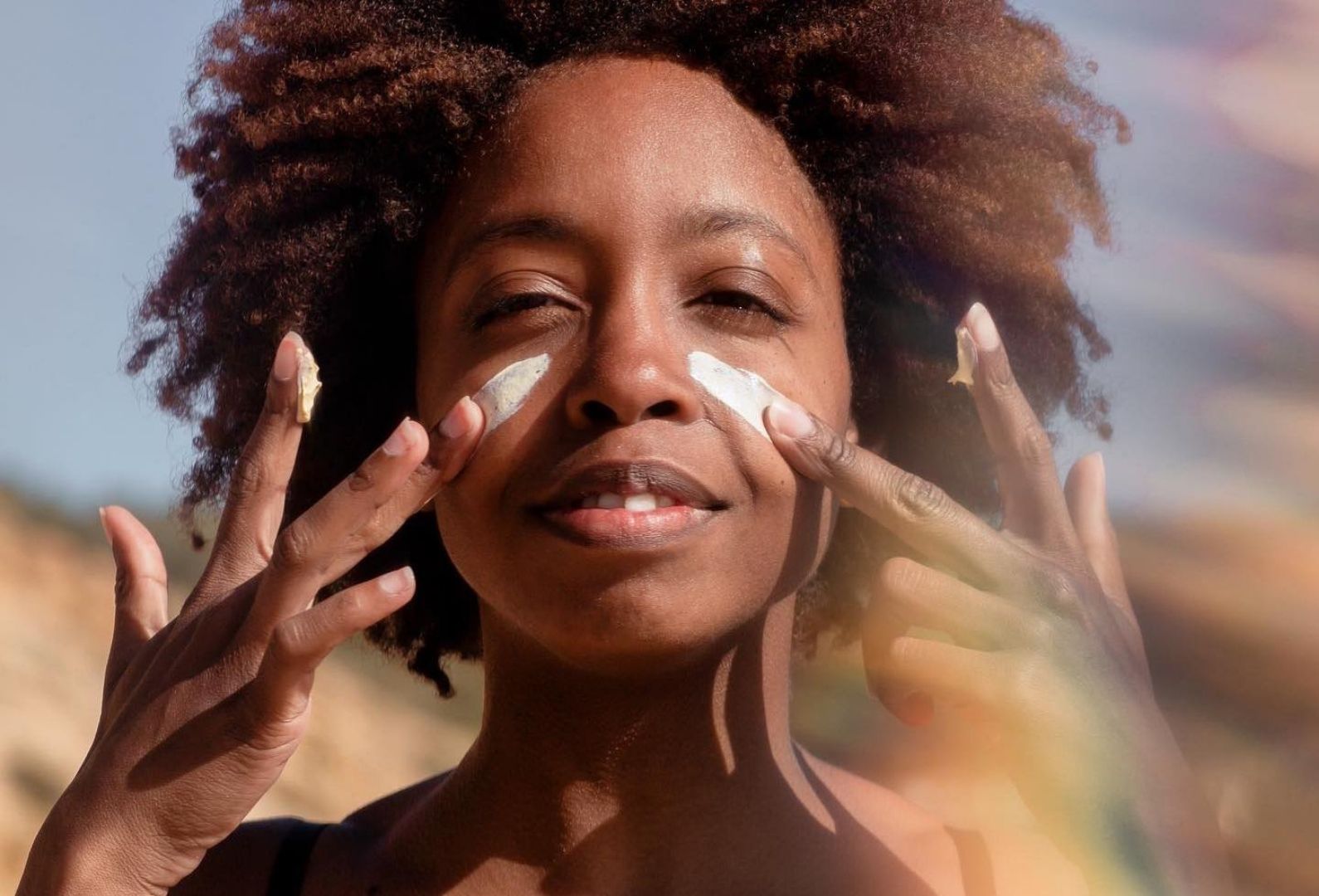
When you think zinc, you think of a typical Australian Summer. Sun, sea, surf, and sand.
Squinting in the sun as mum smeared an embarrassingly thick streak of fluoro-coloured zinc stick across the bridge of your nose. Surfers running along the sand with their leg ropes dragging, boards tucked under their arms, and their entire face painted white like a French mime artist (or more recently, Mark Zuckerberg). Big Bash League cricketers sporting comically white nose and lip warpaint under their baggy greens.
It may not be the hippest of sun protection measures, but it is undoubtedly one of the best. However, you may not have heard of or know very much about the full term, Zinc Oxide, and its amazing properties.
Zinc Oxide (ZnO) is a white, powdered substance derived from the naturally occurring mineral, Zincite. It has a long history of use as a skin safeguard against sun damage and is widely recognised as being the most effective in filtering out ultraviolet (UV) rays - both UVA (responsible for skin ageing) and UVB (responsible for sunburn).
Zinc Oxide is the only natural broad-spectrum based ingredient to be approved by the Australian Therapeutic Goods Administration (TGA) as safe for sunscreens and skincare - a finding supported by dermatologists and the U.S. Food and Drug Administration (FDA) - and it is also the Environmental Working Group’s (EWG) #1 ingredient for sun protection.
Currently, there are only two sunscreen actives that are considered reef-safe and effective: Zinc Oxide and Titanium Dioxide (TiO2). Sunscreens with one of these components in them are considered mineral, and distinct from synthetic and chemical counterparts that work by absorption. Zinc Oxide sunscreens protect you better because the particles sit on top of the skin and act as a reflective barrier to physically block harmful UV rays.
Unlike other active ingredients, Zinc Oxide’s concentration in a product has no limitation, so there’s never a danger of being exposed to too much or of a product containing too little. This also means it is ideal for those with very sensitive skin, and safe for use on pregnant women, babies and young children. All People4Ocean sunscreens exclusively use it.
 Zinc Oxide sunscreen also helps prevent redness due to prolonged or unintentional sun exposure, and diminish the tenderness caused by sunburns. It limits the amount of cellular damage and as a result, greatly reduces the risk of developing Melanoma and other forms of skin cancer. But it’s not only beneficial for sun protection, as it has many other powerful properties for the skin and your health in general.
Zinc Oxide sunscreen also helps prevent redness due to prolonged or unintentional sun exposure, and diminish the tenderness caused by sunburns. It limits the amount of cellular damage and as a result, greatly reduces the risk of developing Melanoma and other forms of skin cancer. But it’s not only beneficial for sun protection, as it has many other powerful properties for the skin and your health in general.
There are historical reports from as far back as 500 BC attributing Zinc Oxide to medicinal use due to its ability to heal wounds and act as a basic antiseptic. It helps skin regenerate and repair itself by keeping the area around the wound moist and clean, and can be used to directly treat other minor skin ailments such as burns and cuts. It facilitates the growth of new tissues, softens dry and chapped skin, and prevents inflammation, thus slowing the signs of ageing in the process.
On the face it works as a gentle astringent to absorb excess oil on the skin, decreasing the chances of an acne flare up. It keeps pimples and blemishes at bay with bacteria fighting agents, and even more excitingly, it can renew your skin’s healthy, natural glow with toner-like effect by minimising large pores and tightening the skin.
As a topical protectant, Zinc Oxide is a popular ingredient used in a wide range of lotions, creams and cosmetics. It can work wonders on all parts of the body (not just the face), from a miracle nappy rash to helping to illuminate dandruff and eczema and its irritating and embarrassing itching and peeling symptoms. It’s been known to crop up in medical products like bandages and ointments too, and in more general uses, as an additive in plastics, ceramics, rubbers, lubricants, adhesives, sealants, paints, pigments, and foods.
As far as Zinc Oxide is concerned, there are many pros and only one conceivable con – it often goes on - and stays on - white, which is hardly a con at all. (People4Ocean gets around the white cast by using carrot oil and pigments in their SPF30 sunscreen, however, some parents actually prefer the colouring so they can ‘see’ that their kids are protected).
Zinc Oxide is a natural and safe protective barrier that shields all skin types from the sun and the elements. It locks in hydration and moisture, fights inflammation, combats common skin irritations, and reverses damage by promoting healthy cell regeneration. And that's exactly why we are expanding our range with two new exciting SPF 50+ sticks coming in light tint and blue! All natural, vegan, zero-waste and packed with the good stuff, including hero zinc oxide. What's not to love?
And are you after a zinc stick that is high performance with zero waste? Our brand-new SPF 50+ STICK IT is water-proof, broad-spectrum, reef-safe (of course) and designed with the whole family in mind. With 100% Natural & Vegan UV-blocking powers and water-repelling waxes, it’s paper packaged sun protection made simple and stylish. Suitable for sensitive skin and children over 6 months old. It's available to buy now in 2 different shades!



SarahMadany on Apr 26, 2022
Beautiful blog! It’s very useful, Thanks for sharing it!
Regards
https://dermeclinique.org/